Danger Sign And Symbols Of Chemicals:
In the early 1800s, rudimentary drawings were used to indicate poison. Today, we have advanced much beyond that. 2016 marks the first full year of adoption of the Globally Harmonized System of Classification and Labeling of Chemicals (GHS) in the U.S., following an update to OSHA’s chemical labeling requirements.
The Hazard Communication Standard (HCS) of OSHA includes the GHS system. The GHS system includes nine symbols, or pictograms, that indicate certain hazardous substances. There are nine pictograms in total, but for the environmental pictogram, there are no requirements in the U.S.
Pictograms are designed to be immediately recognizable by anyone working with hazardous materials and each pictogram represents a specific type of hazard.
The label must also include a signal word (e.g., “danger” or “warning”), a short hazard statement and a precautionary statement outlining how to avoid exposure.
Here is the list of danger signs and symbols of chemicals;
- Carcinogen
- Oxydizer
- Toxicity (Severe)
- Corrosive
- Explosive
- Under pressure gases
- Environmental toxic
- Irritant
- Flammable
Carcinogen:

- Can enter your body directly through mouth or inhalation.
- Can Cause breathing difficulties.
- Can cause infertility, birth defects, organ failure or cancer.
Oxidizer:

- Release oxygen easily which can cause fire and/or explosion.
- May explode when in contact with heat, shock, friction and exposure to the environment.
Toxic:
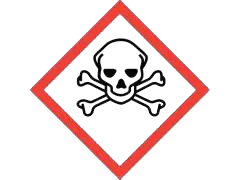
- May cause harmful long term health effects.
- Degree of exposure and toxicity can affect level of health implications.
- It may be a fatal.
Corrosive:
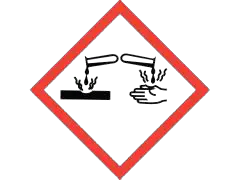
- A substance that causes skin corrosion or burns, or that corrodes metals.
- May cause severe damage to body parts when in contact with this chemical.
Explosive:

- May cause fire, explosion or produce poisonous gas.
- May be fatal if swallowed or if vapour are inhaled.
- Can be toxic or corrosive.
- Avoid contact skin oe eye.
- Explosives, such as organic peroxides and highly unstable materials susceptible to exploding quickly even if not exposed to air (self-reactives).
Under Pressure Gases:

- Stored in pressurised cylinders.
- May be flammable and explosive.
- May be harmful to health.
- May cause oxygen deficiency if gas is leaked in an enclosed space.
Environmental Toxic:
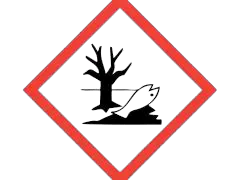
- Has a potential to cause harmful effects on the environment, people and animal.
- Poisonous and can lead to death.
Irritant:
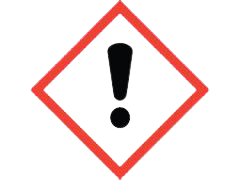
- Can lead to irritation or inflammation of the skin, eyes, nose or regulatory system.
- Can impair vital body functions.
- Can weaken the central nervous system.
- Has harmful health effects.
- May lead to Coma or death.
Flammable:
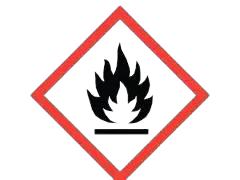
- Highly Flammable.
- May cause fire or produce poisonous gas when react with air, water or chemicals.
- May be fatal if swallowed or if vapours are inhaled.
- Can be toxic or corrosive.
- Avoid contact with skin.
These are the danger sign and symbols of chemicals which are adopted by the Global Harmonised System (GHS) used in the chemical or pharmaceutical industry.
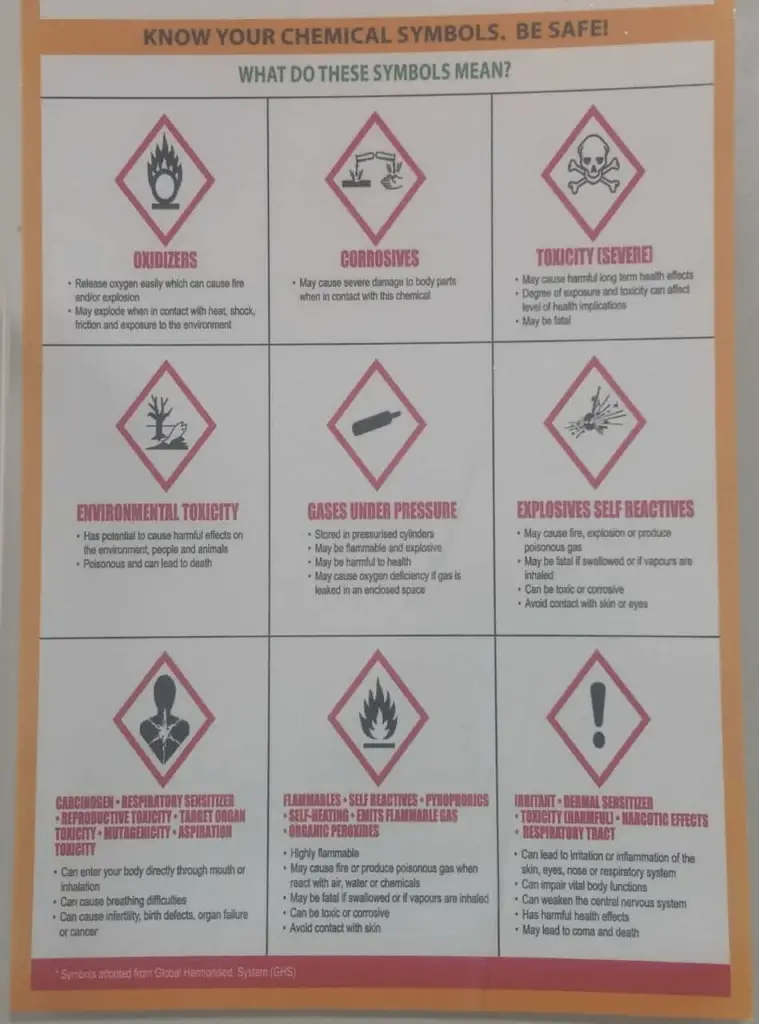
You might be interested:
- What are GAMP 5 software categories
- Best Practices to avoid data integrity issues alcoa plus
- HPLC Interview Question and Answers
- Requirement for conducting stability study in pharma
- Laboratory investigation of aberrant results
- Preparation and standardization of 1N NaOH as per USP
For interview preparation refer
YT channel: Pharmabeej